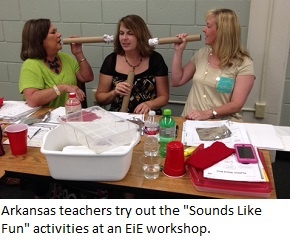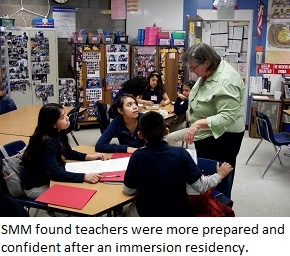| Penn State's Matt Johnson |
Matt Johnson likes sports. He used to play baseball, basketball, and football; after college, he took up golf; and today, having just completed a Ph.D. in education at The Pennsylvania State University, he says that sports experience has shaped both his personal philosophy and his dissertation research. “As a serious competitor, failure doesn’t discourage me, it makes me want to improve,” he says. “So why do schools place such a stigma on failure?”
Matt’s research; which he presented yesterday in a special seminar at the Museum of Science, Boston; explores failure in elementary engineering classrooms. His data source is candid classroom videos collected by Engineering is Elementary researchers for our National Science Foundation-funded research project, E4 (“Evaluating the Efficacy of Elementary Engineering.”)













